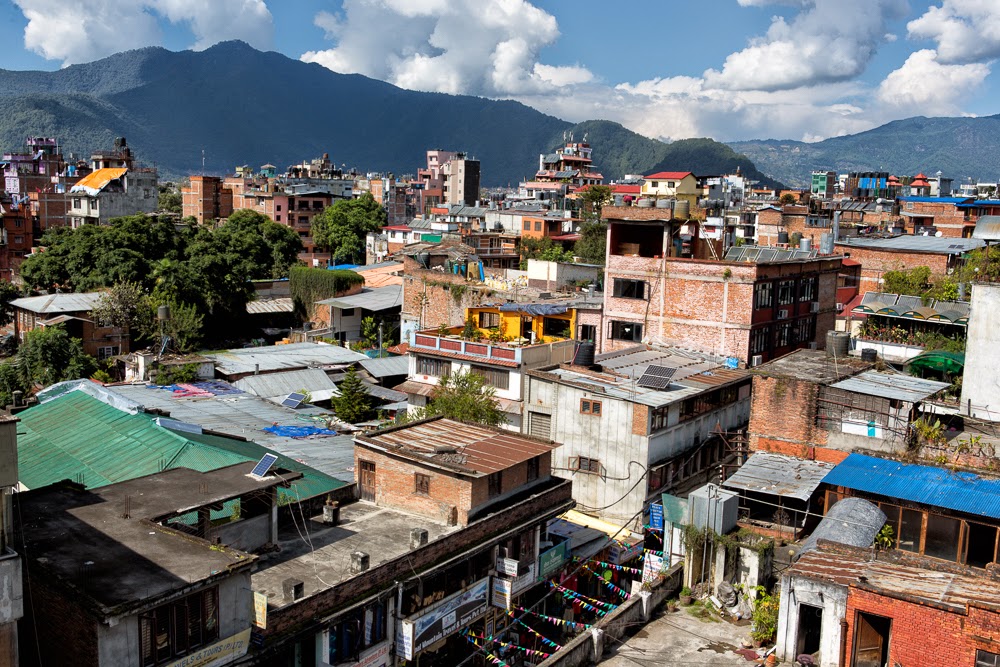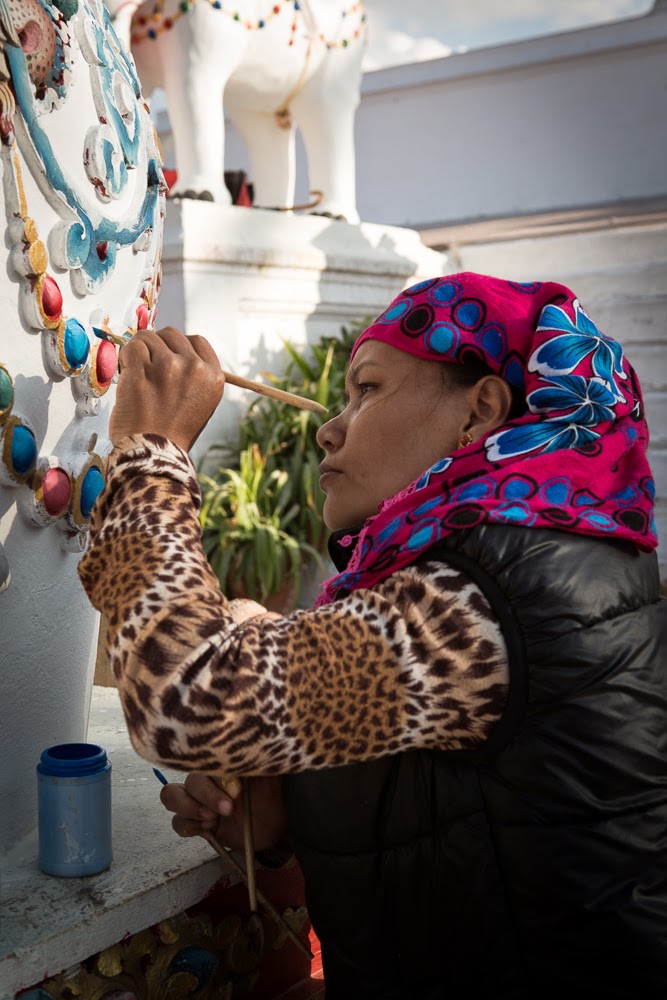Kathmandu welcomes us with open arms
 |
| These two children were playing at The Great Boudha Stupa World Heritage Site. There will be more photos from this location later in the blog. |
 |
| This is a picture of the courtyard at our hotel in Kathmandu. My room was on the fourth floor. I share a room with a fellow american from New Mexico. John was in the Peace Corp in Nepal in 1966-1969. |
 |
| Since John and I both arrived a day early we headed out for a morning walk to Durbar Square. Along the way we passed a morning market. |
 |
| These gentlemen were playing at a temple adjacent to the market. . |
 |
| You can buy almost everything you need at the market. The market is setup in the street. By mid-morning they have to be packed up and gone. |
 |
| Durbar square is a holy site. There were a lot of people making their morning devotional visit. |
 |
| Pigeons are feed at all of the temple locations in Kathmandu. There are also two calves in Durbar Square. |
 |
| I thought these mask were interesting and a little scary. |
 |
| Our photo tour officially began at dinner the first night. But picture taking started at sunrise the next day. At 5:30 am we headed to Swayambunath. |
 |
| As the sun rose a little higher it highlighted all of the dust in the air. Quite a few people in Kathmandu wear a mask over their mouth to keep the dust out. |
 |
| Swayambunath is also know as the monkey palace. When we arrived there were monkeys everywhere. As more people arrived most of the monkeys disappeared. |
 |
| A monk who is just completing his walk around the Stupa. Swayambunath has many shines as well at the Stupa. The complex is an important site for Buddhist as well as revered by Hindus. |
 |
| Bamboo scaffolding at the complex. One of the vertical poles had a 30 degree bend. |
 |
| Incense,smoke, and candles are part of the worship practices. |
 |
| This is why you shouldn't build your scaffolding out of bamboo. |
 |
| The Monkey Palace Stupa. |
 |
| Monkey with a cataract. He doesn't look too happy. |
 |
| Street vendors at the foot of the temple site. Food and materials are still delivered by foot power. |
 |
| One of the candle vendors. |
 |
| We ate lunch at a roof top restaurant close to our hotel. Many of the older buildings in Nepal have six foot ceiling heights. Historically Nepali people weren't very tall. |
 |
| After lunch we went to the Great Boudha Stupa site. |
 |
| This young lady was at the Stupa with her family. She was poising for pictures for them and let us photographers capture a few shots. |
 |
| The dome of the Stupa is a 120 feet in diameter. Buddhist people believe that the relics of Kashyapa Buddha, the third Buddha of Bhadrakalpa was enshrined in the Dome. |
 |
| In 1979 the great stupa became a World Heritage Site. Today it is a major destination for pilgrims from the Himalayas, Tibet, and Southeast and Eastern Asia. |
 |
| Touch up work to keep the stupa looking it's best. |
 |
| Prayer flags back-lit by the sun. |
 |
| People were constantly walking through this smoke. Many stopping for a minute to say a prayer. |
 |
| Camera sun flare turns a pigeon into a rainbow. |
 |
| Ewen Bell our tour leader does a lot of people photography while shooting into the sun. So for the next two shot I am trying to replicate his process. |
 |
| Setting sun putting a warm glow on the buildings around the stupa. Tomorrow we are off to Bhaktapur which is know as the cultural capital of Nepal. |




No comments:
Post a Comment